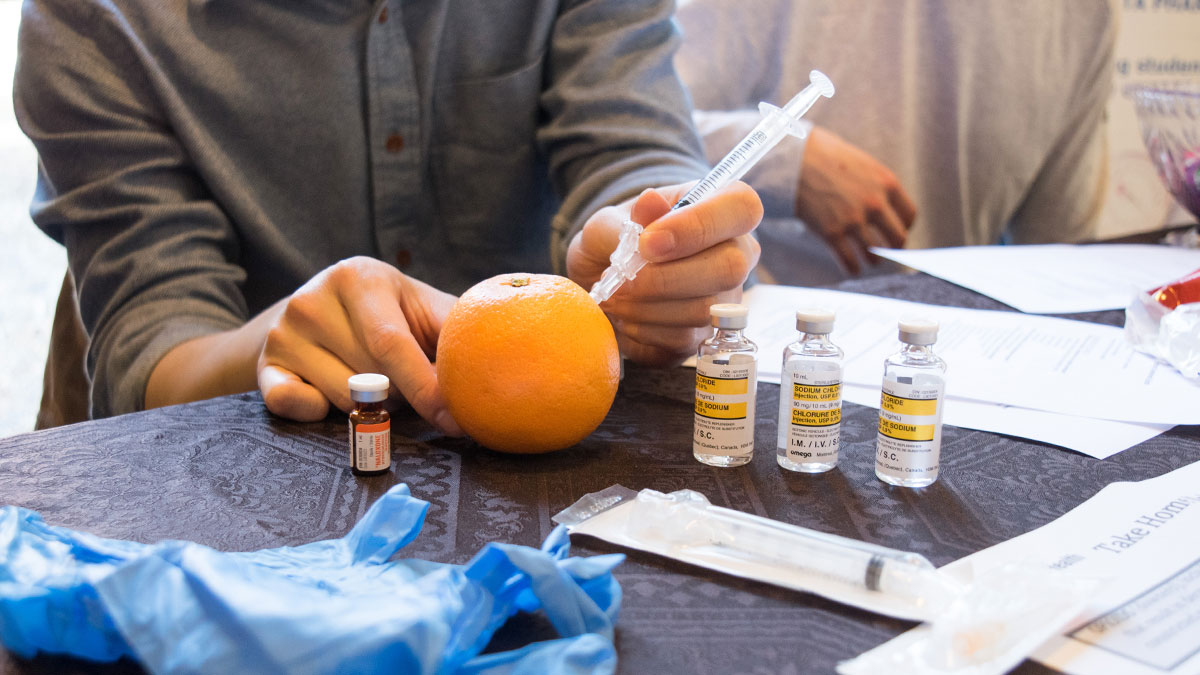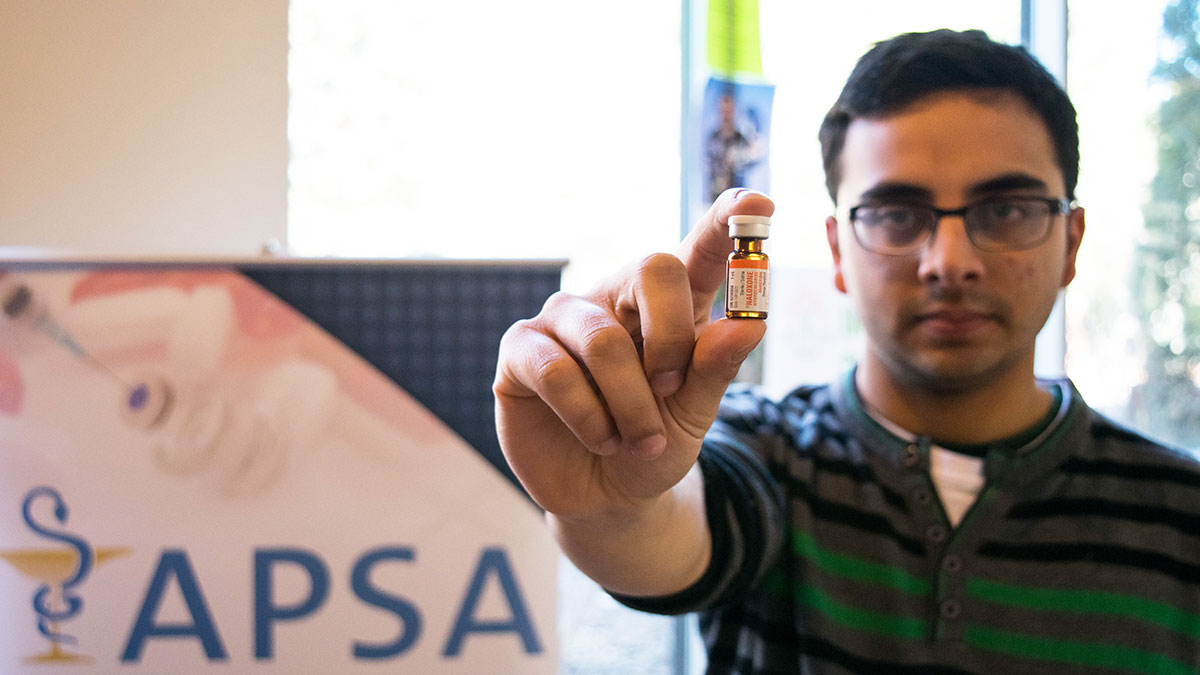Fentanyl-fighting kits available on campus
 Jamie Sarkonak
Jamie SarkonakThe number of university students recreationally using fentanyl painkillers is unclear, but with fentanyl-related deaths doubling from 120 to 272 in Alberta last year, university members are taking matters into their own hands.
As part of Pharmacist Awareness Month, the Alberta Pharmacy Students’ Association’s is spreading campus fentanyl awareness with an informational booth on opiates and overdose help available on campus.
“There’s a lot of outreach (on fentanyl) being done to the general public, but students sometimes stay inside the campus environment,” Iqbal said. “We thought it would be a good idea to connect with students specifically.”
Without treatment, overdosing fentanyl users will lose consciousness and respiratory function. At roughly 100 times stronger than morphine, the difference between doses that result in a high or a death is very small. In a fentanyl overdose, the overdose antidote naloxone is injected into the affected person’s thigh to temporarily reverse the overdose effects. After injection, an ambulance must be called to provide further treatment.

Campuses are investing more in fentanyl harm reduction — in the past month, the SUB pharmacy and the University Health Centre recently started stocking naloxone kits. Pharmacy students advise anyone who knows a fentanyl user to obtain an overdose kit, which are available for free under the government.
Kits contain one dose of naloxone, one syringe, a pair of gloves and a mouthpiece for administering CPR. Once prescribed, a health care professional will teach the student on how to use the kit.
The young adult age group is very vulnerable to mental health problems which can lead them to resort to using drugs such as fentanyl. With the stress of final exams coming up, now is a good time to educate students on harm reduction, pharmacy student Mariah Anderson said. This includes sending messages that aren’t dismissive or negative towards the user.
“Naloxone and other harm reduction strategies have been criticized as encouraging drug use behavior,” Anderson said in a statement. “However, an analogy can be drawn to the use of seat belts and life jackets encouraging risky behavior versus purely a safety measure.”
Fentanyl became a popular opioid after the painkiller oxycodone was changed to be tamper-resistant. In clinical settings, the drug is administered in small doses due to its strength. Outside of clinical settings, fentanyl has been combined with caffeine, heroin and methamphetamine. One pill can contain enough fentanyl to send a user into overdose.
Iqbal hopes to see more awareness on fentanyl safety across campus. Current resources for students include the University Health Centre’s fentanyl advisory webpage, which provides a harm-reduction approach to fentanyl use. Students can help with harm reduction by understanding risks of fentanyl and providing non-judgmental support to users, Iqbal said.
Users need practical tips to stay safe, such as not using alone, sampling before heavy use and not mixing uppers and downers. Everyone already knows the message of “don’t do drugs,” but some people end up on a life path of substance abuse, Iqbal said.
Health Canada recently proposed to take naloxone off of the prescription drug list, which will allow it to be dispensed on a much wider basis. For now, certain pharmacists in Alberta with extra prescribing abilities can dispense naloxone to people in need, Iqbal said.
“We want to keep people as safe as possible until they’re ready to make the change in their life,” he said. “If we can keep them safe, they can one day look back and say, ‘Because of these interventions I’m alive today.’”




